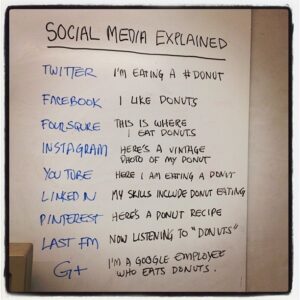Most of us have a Wi-Fi router in our homes and likely know how one basically works. Your Wi-Fi router takes the signal that comes from your Internet provider and allows you to split, share and distribute that signal to other users connected to the same network.
In terms of social media, each of us is like a network Wi-Fi router of content. Instead of the traditional broadcast model where we are merely the end point of targeted content (I send a TV signal. You watch it. Our transaction is done), social media content makes us the receiver, gatekeeper and transmitter-just like a broadband router.
We monitor the flood of content from our social media networks. A raw feed of tweets, videos, blog posts. And just like the Wi-Fi router, we react and make information re-direction decisions. For instance, I get a funny email from a friend. Or read a blog article that makes me go “wow!”
I, as the administrator for my own content stream, “route” that data to friends in my social network. And the model is repeated. Person by person (or social Wi-Fi router to social Wi-Fi router). A viral posting is just content that gets redistributed by a lot of us social routers.
In this model, we are all personal Wi-Fi network and routers with a firewall that blocks out certain data ports. Good, trusted content gets through. Boring, uninspiring content does not. Each “router” that received a social content message gets to decide.
And that’s where creating and marketing good content becomes critical. So to distribute your social media content to the most users, craft content that isn’t blocked by social media users’ personal routing firewall that blocks boring, ordinary content.
According to my own analytics tools, the “water cooler” approach seems to work best for me. That’s providing content that you can’t wait to share the experience with co-workers. Picking and passing on content that seems to instinctively demand emotional or visceral reaction. It sets people off. Makes them go “awww.” Gives them an epiphany on a subject.
This is key as the visceral reaction is what leaps over the inertia-dampening process of logic and drives users to not even think twice about continuing to pass it on. They are not passing it on because of a well-thought-out, or logic argument. They’re doing it more because their emotional response demands it. A good example of this is the recent Neiman Journalism Lab research analytics that show news organizations have to “lighten up” and make their news content more emotionally appealing to drive increased sharing of their content on YouTube.
 People don’t pass on pictures of kittens or articles because they think they are boring. They pass on stuff that makes you stop and think. Like this image. Now pass it on.
People don’t pass on pictures of kittens or articles because they think they are boring. They pass on stuff that makes you stop and think. Like this image. Now pass it on.